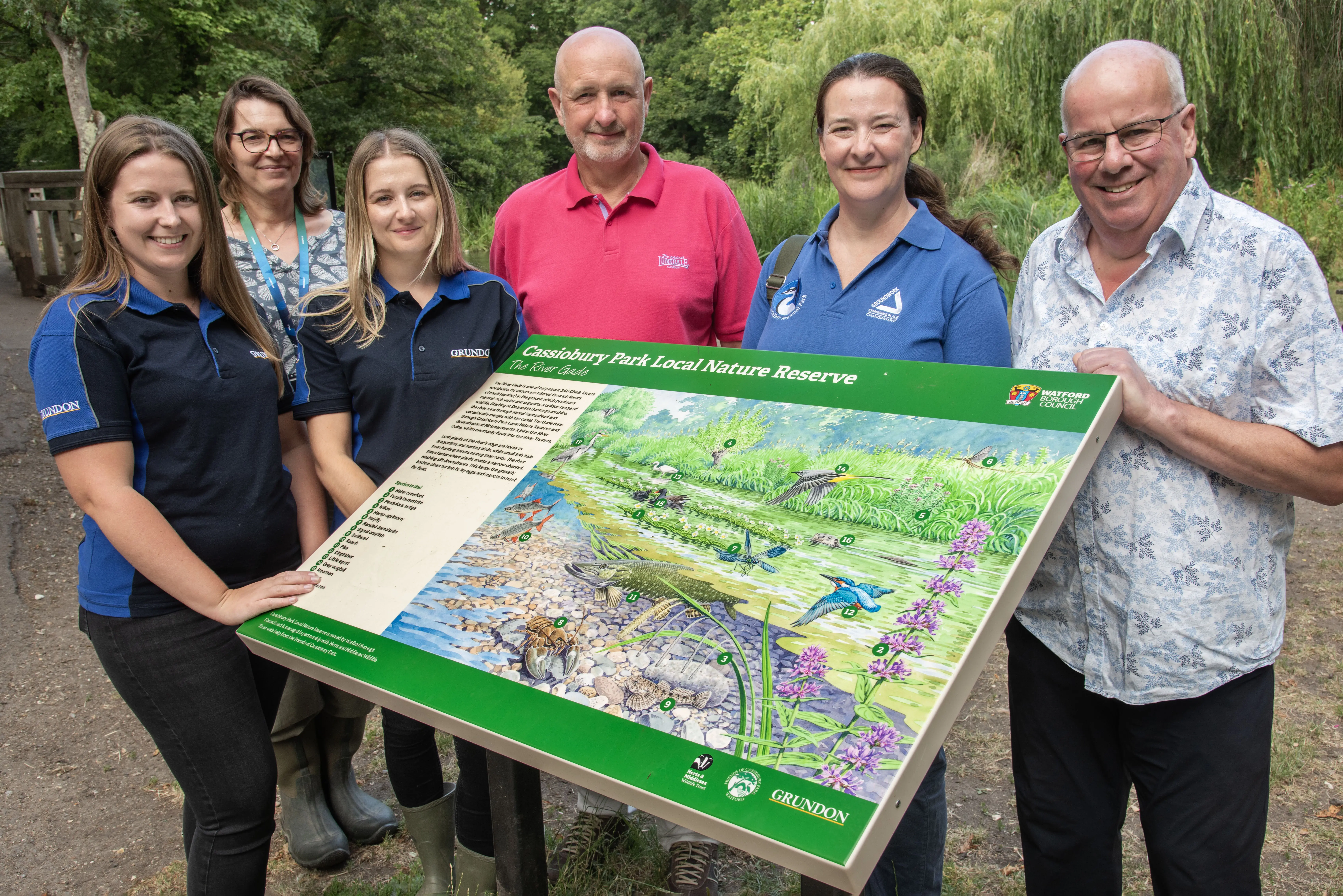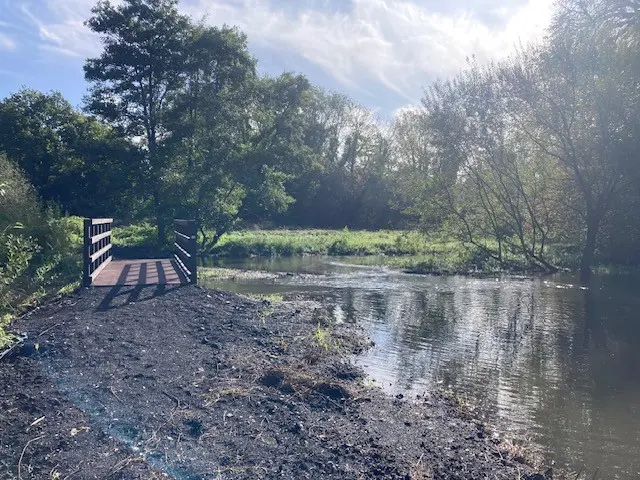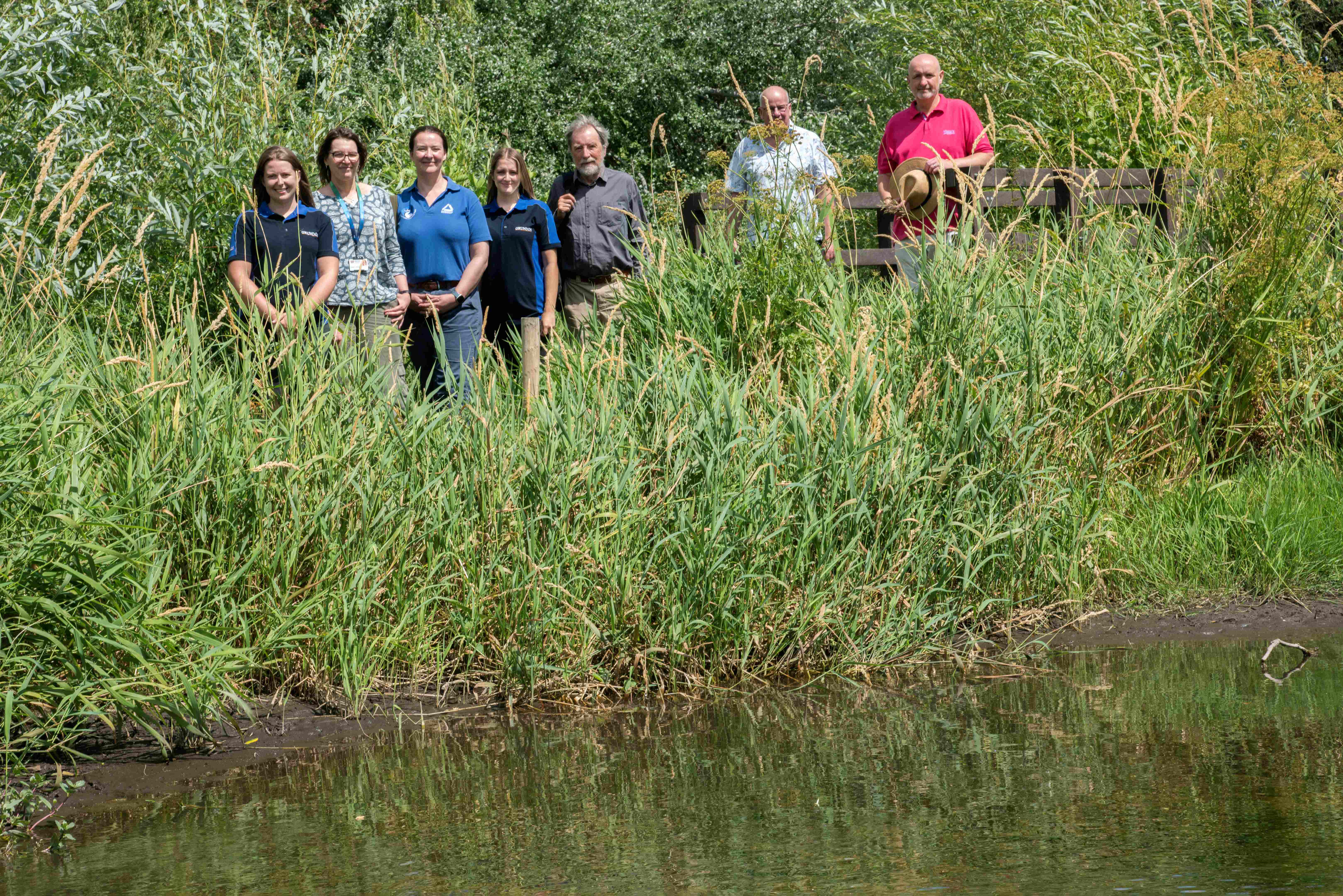A £26,000 grant from Grundon has provided valuable support for a wildlife wetland sanctuary at Cassiobury Park Nature Reserve in Watford.
The project, which is helping boost biodiversity and protect local habitats, has seen the restoration of both the town’s old watercress beds and a linear wetland area fed by the River Gade, together with the expansion of a wildlife pond and a new bridge to improve access.

The grant was made via the Landfill Communities Fund (LCF) and recently Kirsti Santer, Grundon’s Head of Marketing & Communications and Annie Sessions, Marketing Manager, visited the site together with Michelle Jones, Project Manager at Groundwork South, the community and environmental charity which distributes LCF grants on behalf of Grundon.
They were joined by local councillors and officers from both Watford Borough Council and Three Rivers District Council, and representatives from Friends of Cassiobury Park.
Kirsti said: “We were thrilled to see for ourselves what a difference has been made in terms of biodiversity and habitat.
“Having provided the grant, it was incredibly rewarding to see the area now alive with dragonflies and other insects, and we were delighted when a resident heron flew across too.”
“As well as contributing towards the excavation and restoration project, we are pleased the money funded two interpretation boards showing visitors just how important wetland areas like this are to future conservation and wildlife efforts.”
Kirsti Santer
Head of Marketing & Communications, Grundon
Michelle added: “It is always a pleasure to visit projects which have benefited from an LCF grant and to see how the money has been spent. The work undertaken by all the teams is truly transforming this important wetland area and we can’t wait to see how it develops.”
The restoration work, which included digging out the silt from the dried-up cress beds, whilst preserving the historic bed structures and opening feeder channels, as well as increasing the size of the wildlife pond tenfold, was carried out by Watford Borough Council alongside partners and volunteers.
Steve Jakeman, Chair of Friends of Cassiobury Park, said: “With their chalk and gravel base, the watercress beds are a very special place for wildlife and biodiversity. This new wetland is already providing a much-needed home for wildlife and has brought back a large unused open space for everyone to view and enjoy.
“It will also relieve flooding elsewhere in the park by restoring part of the flood plain that has been missing for some time. Working with nature, rather than against it, is sustainable both in terms of cost and environmental impact.”
Steve Jakeman
Chair of Friends of Cassiobury Park
Once the wetlands have fully matured, the area will become a valuable habitat complete with reeds, ponds and scrapes, and it will also preserve the flood plain functionality of the watercress bed area. Tree planting and a wildflower meadow will complement the wetland features and together create a range of habitats that boosts local biodiversity.
This will help the area become an excellent space for birds, like snipe and green sandpiper and for insects and crustaceans, such as freshwater shrimp, and provide a large and relatively accessible site for observing and learning about nature.


